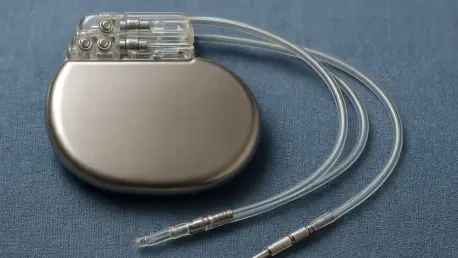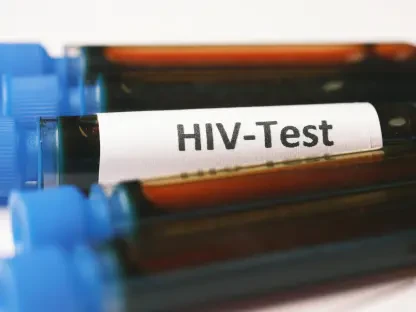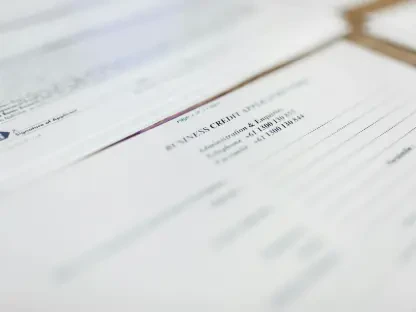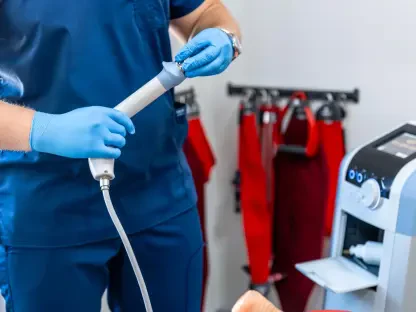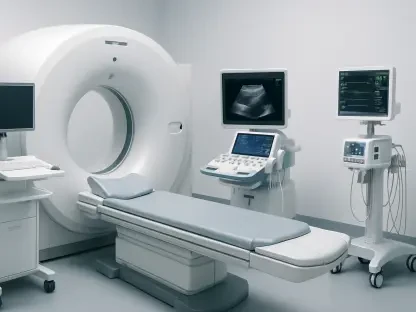Setting the Stage for Cardiac Device Market Dynamics
Imagine a medical technology landscape where innovation saves lives but also demands relentless vigilance to prevent unintended harm, and in 2025, Boston Scientific stands at this critical juncture with its Watchman device, a pioneering solution for reducing stroke risk in atrial fibrillation patients. This heart implant, designed to seal off the left atrial appendage, has captured significant market share, yet recent safety concerns have thrust it into the spotlight. With reported incidents of 120 serious injuries and 17 deaths linked to procedural risks, the company has updated its safety guidelines, prompting a deeper analysis of market implications. This examination explores how these updates influence Boston Scientific’s position in the cardiovascular device sector, assesses current trends, and projects future trajectories for growth and safety integration. The stakes are high as patient outcomes and market confidence hang in the balance, setting the stage for a pivotal discussion on balancing innovation with responsibility.
Analyzing Market Trends and Safety Impacts
Watchman Device’s Commercial Success Amid Challenges
Boston Scientific’s Watchman device has solidified its standing in the cardiovascular market, evidenced by a robust 28% sales increase in the U.S. over recent quarters. This growth reflects strong demand for alternatives to long-term blood thinners among atrial fibrillation patients, positioning the device as a cornerstone of non-pharmacological stroke prevention. However, procedural risks, particularly air embolism during implantation, have cast a shadow over this success. The updated safety guidelines, addressing vulnerabilities like negative pressure in sedated patients, signal a proactive stance. Market analysts view this as a double-edged sword: while reinforcing trust among healthcare providers, it also highlights ongoing challenges that could temper investor enthusiasm if not managed effectively. The balance between maintaining sales momentum and ensuring procedural safety remains a key focal point for stakeholders tracking this segment.
Procedural Safety as a Market Differentiator
Safety concerns surrounding the Watchman implantation process, especially the heightened risk of air embolism under sedation, have emerged as a critical factor influencing market perceptions. Clinical data indicates a three-fold higher risk in sedated patients due to uncontrolled breathing, prompting Boston Scientific to revise instructions with specific precautions like timing device exchanges with exhalation. This move aligns with broader industry trends toward heightened safety protocols as a competitive advantage. Companies that prioritize and transparently address procedural risks often gain favor with hospitals and regulatory bodies, potentially expanding market access. In contrast, failure to mitigate such risks could lead to restricted adoption or increased scrutiny, impacting long-term market share. The emphasis on safety is reshaping purchasing decisions, with healthcare providers increasingly valuing reliability alongside innovation.
Regional Variations and Global Expansion Prospects
The global cardiovascular device market exhibits diverse adoption patterns, influenced by regional healthcare infrastructures and clinical practices. In some markets, resource constraints favor sedation over general anesthesia for Watchman implantation, amplifying safety risks and necessitating tailored training programs. Boston Scientific’s intent to expand globally, as articulated by its leadership, hinges on adapting updated guidelines to these varied settings. Markets with advanced healthcare systems may see faster integration of safety protocols, enhancing the device’s reputation, while emerging regions could face slower uptake due to logistical barriers. Projections suggest that from 2025 to 2027, global sales could grow substantially if localized education initiatives bridge these gaps. The challenge lies in standardizing safety without stifling accessibility, a dynamic that will likely define the company’s international footprint over the coming years.
Forecasting Future Market Trajectories
Technological Innovations Shaping Safety Standards
Looking ahead, the cardiovascular device sector is poised for transformative changes driven by technological advancements aimed at minimizing procedural risks. Real-time imaging and pressure monitoring tools are on the horizon, offering physicians immediate insights during Watchman implantation to prevent complications like air embolism. Boston Scientific’s investment in such innovations could bolster its market leadership by setting new safety benchmarks. Forecasts indicate that integrating these technologies could reduce adverse events by a significant margin over the next few years, enhancing consumer confidence. As regulatory bodies tighten oversight, early adoption of such tools may also preempt compliance hurdles, positioning the company favorably against competitors who lag in safety integration. This trend underscores a shift toward proactive risk management as a core market driver.
Regulatory and Industry Collaboration as Growth Catalysts
The evolving regulatory landscape is another pivotal factor in the market forecast for cardiac devices. Agencies like the FDA are expected to intensify focus on procedural guidelines, pushing manufacturers to embed safety innovations from the design phase. For Boston Scientific, collaboration with regulators and clinicians will be crucial to refine Watchman protocols and sustain market trust. Industry projections suggest that partnerships fostering shared safety goals could accelerate approval processes for new iterations of the device, driving growth. Moreover, as patient outcomes become a central metric for reimbursement policies, aligning with regulatory expectations could unlock favorable pricing models. This collaborative approach is anticipated to shape market dynamics, rewarding companies that prioritize transparency and accountability in their safety strategies.
Patient-Centric Trends and Market Demand
Patient awareness and demand for safer medical interventions are reshaping the cardiovascular device market, with implications for products like the Watchman. As information about procedural risks becomes more accessible, patients are increasingly engaging in discussions with healthcare providers about sedation versus anesthesia options. This trend could drive demand for hospitals equipped to offer general anesthesia, influencing where Boston Scientific targets its marketing efforts. Market analysis predicts a growing segment of informed consumers who prioritize safety data in treatment decisions, potentially boosting adoption of devices with robust safety records. For the company, addressing these patient-centric concerns through clear communication and support resources will be vital to maintaining loyalty and expanding its user base in a competitive landscape.
Reflecting on Strategic Pathways Forward
Looking back, the journey of Boston Scientific’s Watchman device through 2025 highlighted a critical intersection of market success and safety imperatives, with updated guidelines addressing significant procedural risks like air embolism. The analysis of trends and projections revealed a sector increasingly driven by safety as a differentiator, alongside technological and regulatory evolution. For stakeholders, the path forward demands strategic investments in innovations like real-time monitoring tools to preempt complications, alongside robust training programs to ensure global consistency in implantation practices. Strengthening ties with regulatory bodies and prioritizing patient education emerged as essential steps to sustain trust and market growth. These actionable insights pave the way for navigating future challenges, ensuring that innovation continues to serve as a lifeline without compromising the well-being of those it aims to protect.
